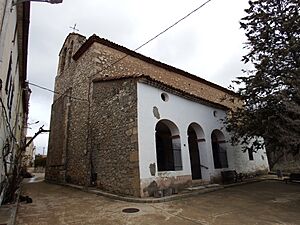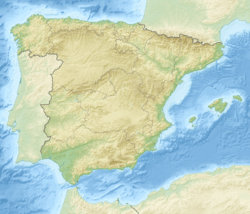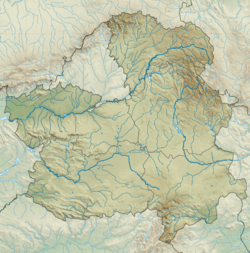Huérguina facts for kids
Quick facts for kids
Huérguina
|
|
|---|---|
 |
|
| Country | |
| Autonomous community | |
| Province | Cuenca |
| Population
(2018)
|
|
| • Total | 52 |
| Time zone | UTC+1 (CET) |
| • Summer (DST) | UTC+2 (CEST) |
Huérguina is a small and quiet municipality located in the Province of Cuenca, within the Castile-La Mancha region of Spain. It is a place where very few people live.
In January 2003, Huérguina had a population of 108 people. By January 2022, the number of residents had decreased to just 50 people. This makes Huérguina one of the smaller communities in Spain.
Contents
What is a Municipality?
A municipality is like a small local area or town that has its own government. It is a basic unit of local administration in many countries, including Spain. Each municipality has a mayor and a local council. They are responsible for managing local services.
Local Government in Spain
In Spain, municipalities are important for daily life. They handle things like local roads, parks, and public services. The people who live in a municipality vote for their leaders. These leaders then make decisions for the community.
How Municipalities Work
Every municipality, no matter how big or small, has a town hall. This is where the local government offices are located. The mayor is the head of the local government. They work with a team of elected officials.
Geography and Location
Huérguina is situated in the eastern part of the Castile-La Mancha region. This area is known for its beautiful natural landscapes. The province of Cuenca has many hills and valleys.
Understanding Cuenca Province
The Province of Cuenca is one of the five provinces in Castile-La Mancha. It is a large area with a mix of small towns and natural parks. The province is famous for its historic city of Cuenca.
Climate in the Region
The climate in this part of Spain can vary. Summers are often warm and dry. Winters can be quite cold. This type of climate is typical for inland areas of Spain.
Population Changes Over Time
Huérguina has seen its population decrease over the years. This trend is common in many rural areas across Spain. Young people often move to bigger cities for work or education.
Why Populations Change
Many factors can cause a town's population to change. Economic opportunities play a big role. If there are not many jobs, people might leave. Access to schools and healthcare also affects where people choose to live.
Impact of Population Decline
When a population gets smaller, it can affect local services. Schools might close if there are not enough children. Shops and businesses might also struggle. Communities often work to attract new residents.
Images for kids
See also
 In Spanish: Huérguina para niños
In Spanish: Huérguina para niños




